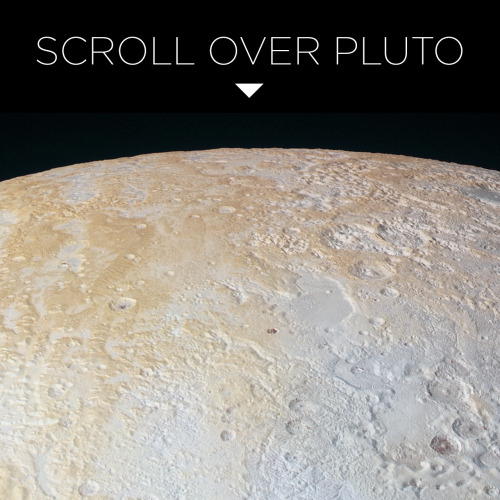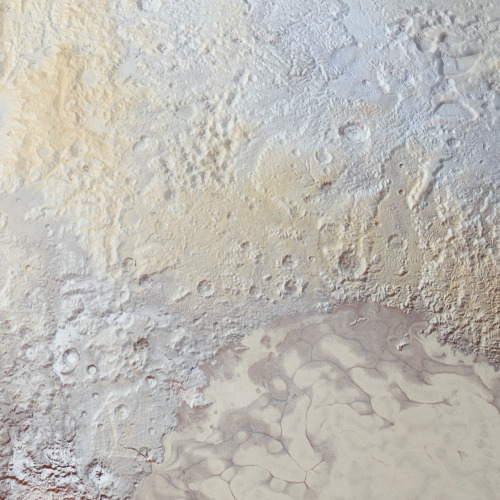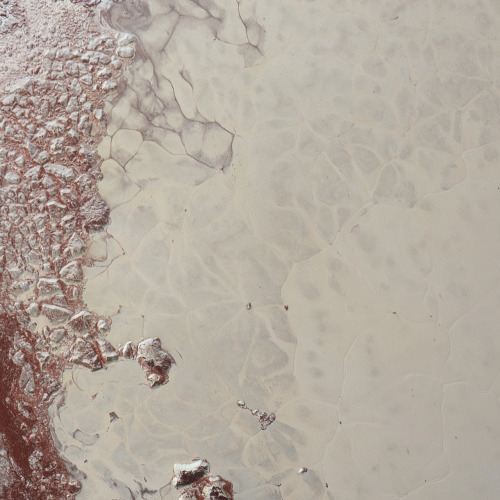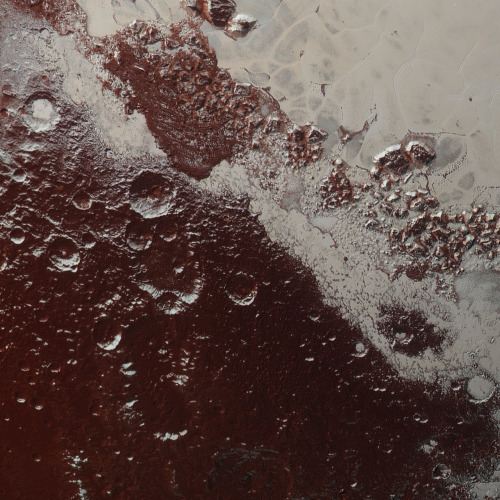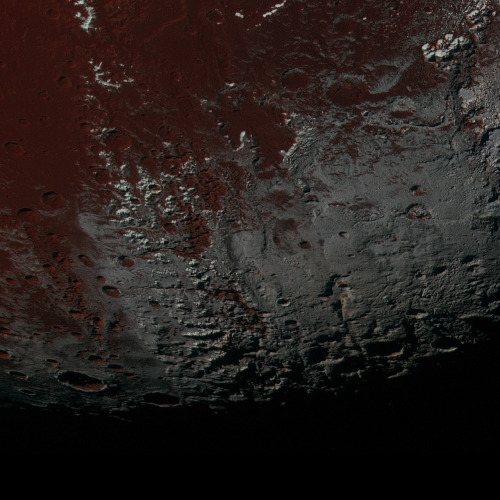Glossary

New Zealand was lovely, but I already touched on what I’d be tempted to talk about with my Southern Stars episode. A person I interviewed as a potential new housemate gave me the idea for this episode because the joy of outer space is truly everywhere and anywhere. The field of astrogeology was not something I had heard of before, though I had indirectly heard of Eugene Shoemaker. I knew the comet Shoemaker-Levy 9 was named after him (and Carolyn Shoemaker, his wife). It turns out he basically founded the modern field of astrogeology! So I talk about him for quite a while, too.
Below the cut are the glossary, transcript, sources, and music credits. Send me any topic suggestions via Tumblr message (you don’t need an account to do this, just submit as anonymous). You can also tweet at me on Twitter at @HDandtheVoid, or you can ask me to my face if you know me in real life. Subscribe on iTunes to get the new episodes of my semi-monthly podcast, and please please please rate and review it. Go ahead and tell friends if you think they’d like to hear it, too!
(The next episode is going to be famous comets, and I’m shooting for an April release.)
Glossary
aeolian processes - the wind’s ability to shape the surface of a planet by eroding, transporting, and depositing materials. Most effective in desert regions, where the sparse vegetation, dry soil, and loose sediments mean these processes have the greatest impact.
albedo features - the International Astronomical Union term for an area of a planet that has a high contrast in color with the surrounding area on a planet’s surface.
chaos terrain - the International Astronomical Union term for where ridges, cracks, and plains on a planet’s surface appear broken and smashed up against each other.
chasma - the International Astronomical Union term for a long, steep-sided, deep surface indentation in a planet’s surface.
colles - the International Astronomical Union term for collections of small, knob-like hills on the surface of a planet.
dorsum - the International Astronomical Union term for a wrinkle-like ridge on a planet’s surface.
facula - the International Astronomical Union term for a bright spot on planets or moons.
fluvial processes - the ways in which rivers and streams impact a planet’s surface by eroding or creating deposits and landforms out of sediment. Sometimes, streams or rivers are associated with glaciers, ice sheets, or ice caps, and then they are called glaciofluvial or fluvioglacial processes.
fossa - the International Astronomical Union term for a long, narrow depression in a planet’s surface.
lacunae - the International Astronomical Union term for irregularly shaped depressions that look like dry lake beds on the surface of Saturn’s moon, Titan.
lobate scarp - the International Astronomical Union term for a curved slope that is probably formed by compressive tectonic movement.
mare - the International Astronomical Union term for a large, circular plain on a planet’s surface.
terra - the International Astronomical Union term for an extensive landmass like a plain or highland.
tesserae - the International Astronomical Union term for regions on the planet Venus that are tiled, polygonal shapes.
vallis - the International Astronomical Union term for a valley on the surface of a planet.
Script/Transcript
Sources
Planetary geology via Wikipedia
Lunar Lobate Scarp via the Lunar Reconnaissance Orbiter Camera
Eugene M. Shoemaker Biographical Memoirs via NASA
Dr. Eugene Shoemaker, 69; Set Record for Finding Comets via The New York Times (July 1997)
Eugene Shoemaker (1928-1997) via NASA Jet Propulsion Lab
Eugene Shoemaker (1928 - 1997) via American Astronomical Society
Gene Shoemaker - Founder of Astrogeology via US Geological Society
Eugene Shoemaker via the Planetary Society
Eugene Shoemaker Ashes Carried on Lunar Prospector via NASA Jet Propulsion Lab
Eugene M. Shoemaker and the Integration of Earth and Sky via GSA Today (April 2001)
Destination Moon by Carolyn C. Porco (Feb 2000)
“I wanted to include something to commemorate Gene’s scientific legacy. It seemed appropriate to choose his favorite photo of Meteor Crater and a photo of the last comet that he and his wife saw together, Comet Hale-Bopp. And somehow, I extracted from the dusty realm of dim memory a passage I had read from Romeo and Juliet long ago that seemed perfect for the occasion.”
Who is an Astrogeologist? via Space Awareness
Careers via the USGS Astrogeology Science Center
“Public Service by contributing to the public knowledge about our Solar System.”
Lunar Calibration via USGS
“The unmatched stability of the lunar surface reflectance (better than one part in 108 per year) makes the Moon attractive as a calibration light source; its radiance can be known with high precision and accuracy. The lunar irradiance is similar in brightness to sunlit land masses on the Earth.”
Video: Astrogeology 1963-2013: Fifty Years of Exploration via the USGS Astrogeology Science Center
Intro Music: ‘Better Times Will Come’ by No Luck Club off their album Prosperity
Filler Music: ‘Muddy Waters’ by LP off her album Lost On You
Outro Music: ‘Fields of Russia’ by Mutefish off their album On Draught
More Posts from Fillthevoid-with-space and Others
Does an ecplispe cause any unusual effects on the Earth?
Yes, and this is one of the things we’re hoping to study more with this eclipse! If you are in totality, you’ll notice a significant temperature drop. We are also expecting to see changes in the Earth’s atmosphere and ionosphere. You can help us document these changes using the GLOBE Observer app https://www.globe.gov/globe-data/data-entry/globe-observer ! There are lots of great citizen science going on during this eclipse, and we’d love to have everyone here helping out! https://eclipse2017.nasa.gov/citizen-explorers

Scott Kelly just tweeted this photo of the Moon, Venus, Jupiter and Earth as seen from the International Space Station
js

In the ancient world (and, honestly, today too) there’s nothing spookier than the sky doing something weird. Auroras, meteors, comets, and eclipses all fell under the category of scary, prophetic bad omens, but don’t worry! In this podcast I explain what they are! There are also some opportunities to see these astronomical events in action coming up. The annual Perseid meteor shower reaches its peak August 11-13 and there will be a total eclipse of the Sun (or a partial eclipse, depending where you’re viewing it from) across North America on August 21, 2017.
Below the cut are sources, music credits, vocabulary list, and the transcript of this episode. Check out the glossary, it’s a big one! There are also some cool eclipse-viewing resources I’ll highlight so you can view this phenomenon safely.
Let me know what you think I should research by messaging me here, tweeting at me at @HDandtheVoid, or asking me to my face if you know me in real life. And please check out the podcast on iTunes, rate it or review it if you’d like, subscribe, and maybe tell your friends about it if you think they’d like to listen!
(My thoughts on the next episode were spectroscopy, probes through the ages, and the transit of Venus. Let me know by the 2nd and I’ll have the next podcast up on August 14th, barring any delays due to trip fatigue!)
Glossary
auroras - a light display that occurs when a magnetosphere is sufficiently disturbed by solar wind that charged particles scatter into the upper atmosphere and lose their energy.
comet - a small, icy body that orbits the Sun. When its orbit takes it close to the Sun, the comet warms up and releases gases and debris that produce a visible atmosphere, sometimes called the comet’s tail.
corona - the hot outer atmosphere of the Sun.
eclipse - when three celestial bodies line up so that one obstructs the visibility of the other two. A solar eclipse can be partial (only part of the Sun is obscured by the Moon), total (all of the Sun is hidden by the Moon), or annular ( the Moon is close to Earth and appears too small to completely cover the Sun completely).
Exeligmos cycle - a cycle that is 3 times the saros cycle, or 669 months. It is more accurate means of predicting eclipses and additionally predicts eclipses that will be visible from a location close to the initial eclipse.
Inex cycle - a cycle of 28 years and 345 days long used to predict an eclipse that’s visible in the opposite hemisphere. For example, if an eclipse happens in the Northern hemisphere, one Inex cycle later there will be an eclipse visible in the Southern hemisphere. The Inex cycle does not ensure that both kinds of eclipses will be of the same type.
meteor - a small rocky or metallic body in space, smaller than asteroids. Contact with the Earth’s atmosphere causes a meteor to burn up in a streak of light. Many meteors entering the atmosphere within a few minutes of each other is called a meteor shower. If a meteor impacts on Earth’s surface without burning up, it is then classified as a meteorite.
penumbra - a region where only a portion of the light source is obscured. When the light source is completely blocked, this darkest part of a shadow is called the umbra.
perihelion - an object’s closest approach to the Sun in its orbit. Its greatest distance from the Sun is called its aphelion.
perigee - a satellite’s closest approach to the Earth in its orbit. Its greatest distance from Earth is called its apogee.
radiant - the point in the sky where objects appear to come from. For example, the Perseid meteor shower appears to come from the constellation Perseus.
Saros cycle - a cycle of 223 months that is used to predict eclipses.
solar prominence - a large, bright feature anchored to the Sun's surface and extend outwards into the Sun's corona. A prominence forms in about a day out of plasma, a hot gas made of electrically charged hydrogen and helium. Stable prominences may last for several months, looping hundreds of thousands of miles into space as plasma flows along a structure of the Sun’s magnetic field that has burst outward, releasing the plasma.
syzygy - the straight-line alignment of three celestial bodies.
Script/Transcript
Sources
Perseids via EarthSky
Perseids via NASA
Meteor showers and viewing tips via StarDate
Comet Swift-Tuttle via NASA
My local library’s information and recommended reading list for learning about eclipses. Love you, Multnomah County!
Map of the Path of Totality across the United States
Solar eclipse map and calendar via the Exploratorium website
Free eclipse glasses at libraries via Lunar and Planetary Institute
Guide to making a pinhole camera to view the eclipse via NASA
Historical eclipses via NASA
Historical eclipses via Astronomy Magazine
“Even if the Moon, however, does sometimes cover the Sun entirely, the eclipse does not have duration or extension; but a kind of light is visible about the rim which keeps the shadow from being profound and absolute.”
Solar prominence via NASA
Solar flares via NASA
Fred Espenak’s guide to eclipses. He’s a former NASA astrophysicist who’s credited with all the eclipse predictions so I trust him.
Some good but confusing charts on solar eclipse Saros cycles via NASA
“Van den Bergh placed all 8,000 solar eclipses in von Oppolzer's Canon der Finsternisse (1887) into a large two-dimensional matrix. Each Saros series was arranged as a separate column containing every eclipse in chronological order. The individual Saros columns were then staggered so that the horizontal rows each corresponded to different Inex series.”
A Danish webpage on calculating eclipses
Hawks, Ellison. The Boy’s Book of Astronomy. Frederick A. Stokes Co: New York, 1914. Located in Google Books preview. (Heads up, this is a fairly racist source.)
Richard Cohen. Chasing the Sun. Random House: NY, 2010.
Robert A. Henning: “different forms, wavering, many colours diffusing and changing, sometimes far away, sometimes filling the heavens around and above, plunging great dropping spears and sheets of colour earthward towards your very head as though a great hand were dropping colour like burning oil” (43).
Ernest W. Hawkes: “whistling, crackling noise” (44).
Jeremy Belknap: “like running one’s thumb and forefinger down a silk scarf” (44).
Intro Music: ‘Better Times Will Come’ by No Luck Club off their album Prosperity
Filler Music: ‘Eclippse’ by Radical Face off his album Sunn Moonn Eclippse. Check out the video in the album link, it’s amazing.
Outro Music: ‘Fields of Russia’ by Mutefish off their album On Draught

HELIACAL
[adjective]
pertaining to or occurring near the sun, especially applied to such risings and settings of a star as are most nearly coincident with those of the sun while yet visible.
Etymology: Late Latin hēliac(us) < Greek hēliakós.
[Luis Tamani - Luz Solar]
What is an upcoming project/mission you're most excited for?
It is likely that I’ll be assigned a mission to the International Space Station (ISS) within the next few years. We’ve had a continuous presence on the Space Station for 17 years now, along with our international partners (Russian Space Agency, European Space Agency, Japanese Space Agency, and Canadian Space Agency). Missions on the ISS typically last 6 months. I’m incredibly excited to contribute to the impressive array of scientific experiments that we are conducting every day on ISS (I am a scientist after all!), and very much look forward to the potential of going for a spacewalk and gaining that perspective of gazing down on the fragile blue ball that is our home from above. Beyond that, being part of test missions on the Orion spacecraft (currently under construction at NASA!) would be an extraordinary opportunity. The current NASA plan is to send astronauts in Orion in a mission that will go 40,000 miles beyond the Moon in the early 2020s, reaching a distance further than that ever travelled by humans. I’d certainly be game for that!

Earth is a super special world. It has life on it, and getting conditions just right so that life will survive is an incredibly difficult task. Other planets and other moons in our solar system may look like they could have life on them, but it just didn’t happen.
Life on other planets is for a different episode, though. In this one, I’m talking about what we can see on our close neighbors, the eight (maybe seven?) planets in our solar system. Learn how they were discovered, what naming conventions we use for them and their moons, how to differentiate between them, and what probes we’ve sent out to learn more about them. Also enjoy snippets from the lovely orchestral suite written for each planet by Gustav Holst! It’s the longest episode so far but I promise it’s worth it.
There’s a timeline below the cut in addition to the other resources because hooboy did I mention a lot of people. I may also put together a timeline of probes... But that’s for another podcast. Maybe the next podcast! Let me know what you think I should research by messaging me here, tweeting at me at @HDandtheVoid, or asking me to my face if you know me in real life. And please check out the podcast on iTunes, rate it or review it if you’d like, subscribe, and maybe tell your friends about it if you think they’d like to listen! Also below the cut are my sources, music credits, vocab list, and the transcript. I mention a book, a play, a poem, and a few works of art, and I quote an astronomy book in this episode so if you want to see that written down, those sources are there as well.
(My thoughts for the next episode were spectroscopy, auroras, or probes through the ages. Let me know by the 21st and I’ll have the next podcast up by July 31!)
Glossary:
auroras - a light display that occurs when a magnetosphere is sufficiently disturbed by solar wind that charged particles scatter into the upper atmosphere and lose their energy.
magnetosphere - an invisible barrier that surrounds a celestial objet. It is often generated by the movement of the liquid metal core of the object. Around a planet, it deflects high-energy, charged particles called cosmic rays that can either come from the Sun or, less often, from interstellar space.
prograde - when a planet spins from east to west.
retrograde - when a planet spins from west to east.
sol - a unit of time measuring one Martian day, or 24 Earth-hours and 40 Earth-minutes. The immediately previous Martian day is called yestersol.
transit of Mercury/Venus - when a planet passes in front of the Sun.
Script/Transcript
Timeline of people mentioned
Nicolaus Copernicus, Polish (1473-1543)
Tycho Brahe, Danish (1541-1601)
Galileo Galilei, Italian (1564-1642)
Johannes Kepler, German (1571-1630)
Simon Marius, German (1573-1625)
Pierre Gassendi, French (1592-1655)
Giovanni Cassini (also known as Jean-Dominique Cassini), Italian/French (1625-1712)
Christiaan Huygens, Dutch (1629-1695)
William Herschel, German/English (1738-1822)
Johann Elert Bode, German (1747-1826)
Caroline Herschel, German/English (1750-1848)
Johann Franz Encke, German (1791-1865)
John Herschel, English (1792-1871)
William Lassell, English (1799-1880)
Urbain Le Verrier, French (1811-1877)
Johann Galle, German (1812-1910)
John Couch Adams, English (1819-1892)
Edouard Roche, French (1820-1883)
Heinrich Louis d’Arrest, German (1822-1875)
Asaph Hall III, American (1829-1907)
James Clark Maxwell, Scottish (1831-1879)
Giovanni Schiaparelli, Italian (1835-1910)
Percival Lowell, American (1855-1916)
Eugène Antoniadi (also known as Eugenios Antoniadis), Greek (1870-1944)
Gerard Kuiper, Dutch/American (1905-1973)
Clyde Tombaugh (1906-1997)
Sources:
Who discovered each planet via Cornell University
The mathematical discovery of Neptune and Pluto via University of St. Andrews, where my mom’s boyfriend’s son graduated last year! Mad props, Henry!
Holst’s The Planets via the Utah Symphony
More on Holst’s suite, including music files
Chronology of solar system discovery
MESSENGER information via John Hopkins University Applied Physics Laboratory
Auroras via NASA’s Themis mission
Magnetospheres via NASA, which has a tumblr! You should follow it! Good stuff.
Curiosity rover via NASA
‘Canali on Mars’ debacle via NASA
Mariner 9 via NASA
Origin of ‘yestersol’ and Martian day-length via A Way With Words
Richard Bram: “Superlatives are inadequate; words fail. Look. Think. Be in awe.”
Images of Mars through the years via The Telegraph
Mars-One mission to colonize Mars
Names of all the planet’s moons and their significance in mythology, last updated in 2013 and questionably reliable but from what I know of mythology—and I do know more than most—it’s not too far off.
Table of moons of various planets
Jupiter via NASA
Jupiter moon name facts via NASA
The Galilean Moons of Jupiter via University of Colorado at Boulder
Saturn’s moons via Phys.org
Cassini mission website
Saturn overview via NASA
Saturn’s moon Titan via NASA
Ethane via PubChem
Methane via EPA
Neptune’s moons via Space.com
What is Pluto via NASA
Pluto Overview via NASA
“Dwarf planets may provide the best evidence about the origins of our solar system.”
New Horizons mission via NASA
Pluto and our designations for planets are mentioned very briefly in this Oatmeal comic. I liked it.
Sobel, Dava. The Planets. Viking: NY, 2005.
“But tides raised by the Sun in the planet’s molten middle gradually damped Mercury’s rotation down to its present slow gait” (34).
“Light and heat always hit Mercury dead on, while the north and south poles, which receive no direct sunlight, remain relatively frigid at all times” (35).
“Venusian clouds comprise large and small droplets of real vitriol—sulfuric acid along with caustic compounds of chlorine and fluorine. They precipitate a constant acid rain, called virga, that evaporates in Venus’ hot, arid air before it has a chance to strike the ground” (61).
“…Neptune, where the voices of a female choir, sequestered in a room offstage, are made to fade out at the finale (with no sacrifice in pitch) by the slow, silent closing of a door” (165).
Holst: “Saturn brings not only physical decay but also a vision of fulfillment” (165).
“They occupy a nearby region of perpetual fragmentation known as the Roche zone, named for the nineteenth-century French astronomer Edouard Roche, who formulated the safe distances for planetary satellites” (172).
“It's near twin, Neptune, reveals a more complex beauty in subtle stripes and spots of royal to navy blue, azure, turquoise, and aquamarine” (200).
“This outlying population offered Pluto a new identity—if not the last planet, then the first citizen of a distant teeming shore” (214).
Van Gogh, Vincent. Starry Night (June 1889).
—. Road with Cypress and Star (May 1890).
—. White House at Night (June 1890).
Shakespeare, William. A Midsummer Night’s Dream (1605).
Pope, Alexander. “The Rape of the Lock” (1712). (It’s a mock-epic satiric poem about stealing a lock of hair, not physical rape)
Duane, Diane. Wizards at War. Harcourt Trade Publishers: San Diego CA, 2005.
Intro Music: ‘Better Times Will Come’ by No Luck Club off their album Prosperity
Filler Music: The Planets (1918) by Gustav Holst, performed by the London Symphony Orchestra in 2003.
Outro Music: ‘Fields of Russia’ by Mutefish off their album On Draught
What are the most important skills an astronaut should have m?
First of all, the basic requirement is a bachelor’s degree in a STEM field, and 3 years of experience (which can also be substituted for by an advanced degree). Other than that, operational experience (things with a technical/active/hands on nature like flying airplanes, SCUBA diving, taking things apart and putting them back together, basic fix-it skills, etc. etc.) is very important, as this is an integral aspect of every day of a space mission. What we call “expeditionary skills” are also essential, basically the types of things you try to instill in your children, like how to play nicely with others, self care, team care, etc. I like to think about this on the lines of a camping trip and who you would like to have along with you …someone that is competent and can take good care of themselves and their equipment, someone that contributes to the team and helps with group tasks, someone that is good natured and pleasant to be around, etc., someone fun! These things are increasingly important now that we are regularly doing long duration missions (typical International Space Station mission is 6 months). Experience living in extreme/remote/isolated environments with small teams is also useful, as it is similar to what we experience as astronauts.
I love this comic a lot! You can read it all online to make sure you want to buy it, and then you should buy it because it’s extremely excellent. It’s about preservation in space and also love and found families! And it’s absolutely beautiful. I met Tillie while she was in my town signing her comic Spinning (also excellent) and she drew one of the fish spaceships for me and she was so kind even though I am terrible at smalltalk. Check her comic out!

OH MY! Here’s the cover for ON A SUNBEAM the graphic novel. Coming out this fall!!!!
Does Mars Have Rings? Not Right Now, But Maybe One Day
NASA - Mars Science Laboratory (MSL) patch. March 20, 2017 As children, we learned about our solar system’s planets by certain characteristics – Jupiter is the largest, Saturn has rings, Mercury is closest to the sun. Mars is red, but it’s possible that one of our closest neighbors also had rings at one point and may have them again someday. That’s the theory put forth by NASA-funded scientists at Purdue University, Lafayette, Indiana, whose findings were published in the journal Nature Geoscience. David Minton and Andrew Hesselbrock developed a model that suggests that debris that was pushed into space from an asteroid or other body slamming into Mars around 4.3 billion years ago alternates between becoming a planetary ring and clumping together to form a moon. One theory suggests that Mars’ large North Polar Basin or Borealis Basin – which covers about 40 percent of the planet in its northern hemisphere – was created by that impact, sending debris into space. “That large impact would have blasted enough material off the surface of Mars to form a ring,” Hesselbrock said. Hesselbrock and Minton’s model suggests that as the ring formed, and the debris slowly moved away from the Red Planet and spread out, it began to clump and eventually formed a moon. Over time, Mars’ gravitational pull would have pulled that moon toward the planet until it reached the Roche limit, the distance within which a planet’s tidal forces will break apart a celestial body that is held together only by gravity.
Image above: The image from NASA’s Curiosity Mars rover shows one of Mars’ two moons, Phobos, passing directly in front of the other, Deimos, in 2013. New research suggests the moons consolidated long ago from dust rings around the planet and, in the distant future, may disintegrate into new rings. Image Credits: NASA/JPL-Caltech/Malin Space Science Systems/Texas A&M Univ. Phobos, one of Mars’ moons, is getting closer to the planet. According to the model, Phobos will break apart upon reaching the Roche limit, and become a set of rings in roughly 70 million years. Depending on where the Roche limit is, Minton and Hesselbrock believe this cycle may have repeated between three and seven times over billions of years. Each time a moon broke apart and reformed from the resulting ring, its successor moon would be five times smaller than the last, according to the model, and debris would have rained down on the planet, possibly explaining enigmatic sedimentary deposits found near Mars’ equator. “You could have had kilometer-thick piles of moon sediment raining down on Mars in the early parts of the planet’s history, and there are enigmatic sedimentary deposits on Mars with no explanation as to how they got there,” Minton said. “And now it’s possible to study that material.” Other theories suggest that the impact with Mars that created the North Polar Basin led to the formation of Phobos 4.3 billion years ago, but Minton said it’s unlikely the moon could have lasted all that time. Also, Phobos would have had to form far from Mars and would have had to cross through the resonance of Deimos, the outer of Mars’ two moons. Resonance occurs when two moons exert gravitational influence on each other in a repeated periodic basis, as major moons of Jupiter do. By passing through its resonance, Phobos would have altered Deimos’ orbit. But Deimos’ orbit is within one degree of Mars’ equator, suggesting Phobos has had no effect on Deimos. “Not much has happened to Deimos’ orbit since it formed,” Minton said. “Phobos passing through these resonances would have changed that.” “This research highlights even more ways that major impacts can affect a planetary body,” said Richard Zurek of NASA’s Jet Propulsion Laboratory, Pasadena, California. He is the project scientist for NASA’s Mars Reconnaissance Orbiter, whose gravity mapping provided support for the hypothesis that the northern lowlands were formed by a massive impact. Minton and Hesselbrock will now focus their work on either the dynamics of the first set of rings that formed or the materials that have rained down on Mars from disintegration of moons. Curiosity is part of NASA’s ongoing Mars research and preparation for a human mission to Mars in the 2030s. Caltech manages JPL, and JPL manages the Curiosity mission for NASA’s Science Mission Directorate in Washington. For more about Curiosity, visit: http://www.nasa.gov/msl and http://mars.jpl.nasa.gov/msl/ For more information about NASA missions investigating Mars, visit: https://mars.nasa.gov/ Image (mentioned), Text, Credits: NASA/Laurie Cantillo/Dwayne Brown/JPL/Guy Webster/Purdue University/Steve Tally/Emil Venere/Writer: Brian Wallheimer. Best regards, Orbiter.ch Full article
A podcast project to fill the space in my heart and my time that used to be filled with academic research. In 2018, that space gets filled with... MORE SPACE! Cheerfully researched, painstakingly edited, informal as hell, definitely worth everyone's time.
243 posts
